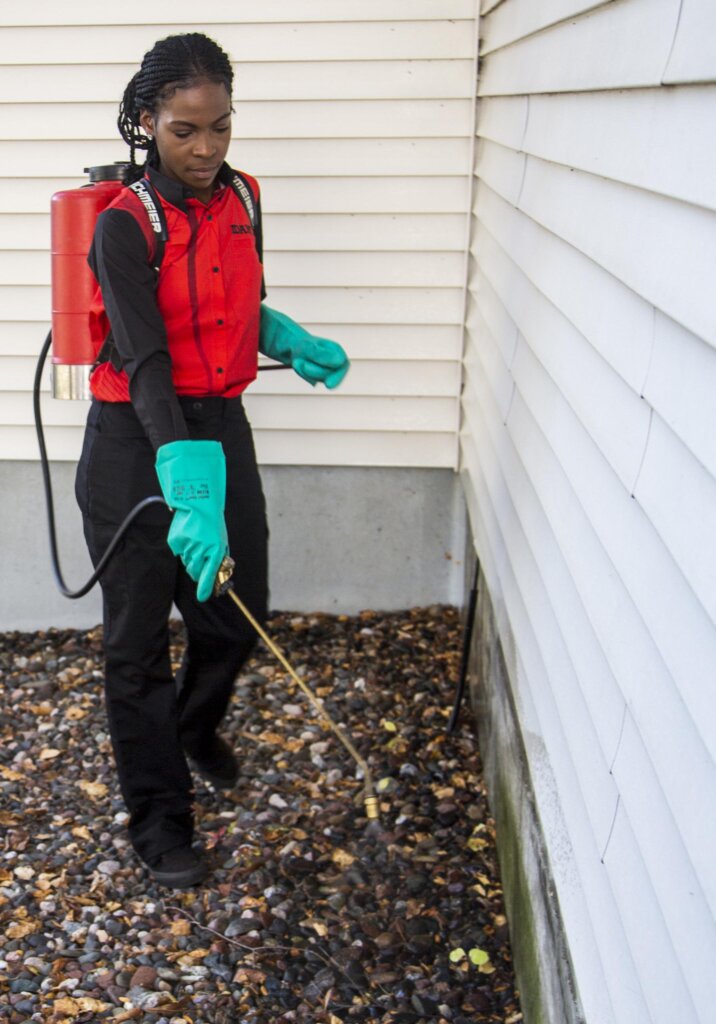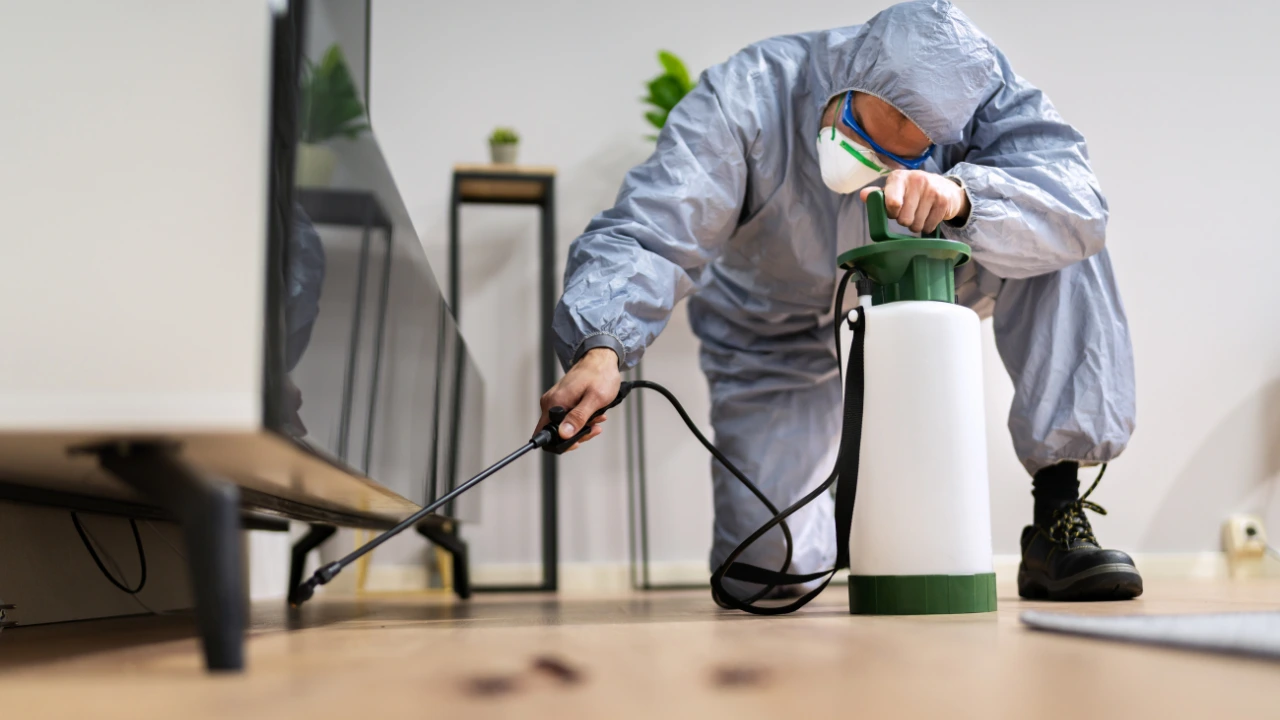Cost-Effective and Dependable Services by Pest Control Lockhart
Cost-Effective and Dependable Services by Pest Control Lockhart
Blog Article
Exploring Invasion and Treatment Methods in the Globe of Insect Control
The landscape of bug control incorporates a myriad of obstacles, particularly as infestations of typical family insects proceed to progress. Understanding the actions and reproductive patterns of these nuisances is crucial for establishing reliable treatment strategies. By incorporating safety nets with innovative management strategies, such as Integrated Parasite Monitoring (IPM), home owners can better guard their atmospheres. Nevertheless, the performance of these techniques may differ dramatically based upon details situations. What underlying elements contribute to the success or failing of these techniques in various setups?

Usual House Vermin
When it pertains to managing our home, recognizing typical household insects is important. These parasites not just disrupt our comfort but can likewise present health and wellness threats and damage building. One of the most prevalent household bugs include ants, roaches, rats, termites, and bed pests.
Ants, typically seen foraging in kitchens, can infect food and establish large swarms. Rodents, including computer mice and rats, can cause structural damage and carry diseases like hantavirus and salmonella.
Acknowledging the indications of these insects, such as droppings, nests, or attack marks, is necessary for very early intervention (Pest Control Lockhart). Correct hygiene methods, sealing access factors, and maintaining a clutter-free atmosphere are effective preventative steps. By determining these typical family bugs and comprehending their behaviors, home owners can take aggressive steps to mitigate infestations, making certain a much healthier living atmosphere
Recognizing Parasite Infestations
Insect problems can escalate promptly, transforming a minor annoyance right into a significant trouble if not resolved promptly. Common elements contributing to infestations consist of poor cleanliness, structural susceptabilities, and seasonal changes that drive pests inside.
Identifying the sort of insect is important, as different varieties display varied actions and reproductive rates. For instance, rodents may develop nests in covert areas while bugs like roaches thrive in wet atmospheres. Early discovery typically depends upon recognizing indicators such as droppings, chomp marks, or unusual noises, which can show a problem before it becomes serious.
Environmental conditions also play a crucial duty in bug proliferation. Warm, damp climates can facilitate the fast growth of bug populations, while changes in landscaping or construction can inadvertently create favorable environments. Regular inspections and preventative procedures are critical to minimizing the danger of invasions. An enlightened technique to recognizing these characteristics lays the foundation for reliable parasite management approaches in the future.
Treatment Methods and Strategies
Reliable treatment techniques and strategies are necessary for mitigating parasite infestations and restoring a risk-free setting. A complex technique is often best, including chemical, biological, and mechanical methods customized to the particular insect and the severity of the problem.
Chemical treatments include using insecticides and herbicides, which can successfully eliminate insects. However, appropriate application and adherence to security standards are essential to lessen risks to humans and non-target microorganisms. Integrated Insect Monitoring (IPM) urges the wise use chemicals as a last resort, relying rather on monitoring and limit levels to establish intervention requirements.
Biological control methods entail introducing all-natural predators or parasites to minimize bug populaces. This approach is progressively popular, particularly in farming setups, as it promotes environmental sustainability.
Mechanical approaches, such as traps and obstacles, supply immediate relief from pests without presenting chemicals. Choices consist of sticky catches for insects or physical obstacles for rats.
Ultimately, the option of therapy approach ought to consider the specific insect, the atmosphere, and potential influence on human health and wellness and environments. A well balanced mix of these techniques can effectively handle infestations while advertising long-term bug control services.
Preventive Procedures for House
Proactively dealing with pest problems prior to they intensify is important for preserving a healthy and balanced home setting (Pest Control Lockhart). Executing effective safety nets can significantly decrease the chance of problems, inevitably guarding both your home and wellness

Proper landscape design additionally plays an important duty in prevention. Keeping shrubs and trees cut away from the house reduces the possibilities of pests discovering their way indoors. Make certain that water drainage systems are operating efficiently to prevent standing water, which can draw in insects and other pests.
Finally, routine examinations are recommended. Routinely examining for indications of parasite task permits for very early intervention. By adopting these safety nets, house owners can create an atmosphere that is much less congenial to view it insects, therefore enhancing their general lifestyle and reducing the requirement for extensive insect control interventions.
Business Insect Control Approaches
A thorough method to business insect control is crucial for organizations aiming to keep a risk-free and hygienic environment. Efficient methods entail a mix of normal inspections, employee training, and the application of Integrated Bug Administration (IPM) techniques.
Regular assessments make it possible for very early discovery of pest task, permitting prompt intervention. Businesses need to create a routine timetable for these assessments, concentrating on risky areas such as kitchens, storeroom, and garbage disposal websites. Worker training is equally vital; team should be educated on the indications of insect invasions and the value of reporting them right away.
Implementing IPM techniques helps minimize insect issues sustainably. This consists of habitat adjustment, such as securing access points and lowering mess, More Help along with employing natural deterrents prior to turning to chemical therapies.

Additionally, collaborating with a licensed bug control supplier ensures access to expert expertise and innovative therapy alternatives. This partnership can bring about personalized bug control prepares customized to the details demands of the organization, reducing risks and enhancing total efficiency. Inevitably, an aggressive and educated strategy cultivates a pest-free environment, securing both public health and company reputation.
Conclusion
In conclusion, efficient bug control demands an extensive understanding of usual home bugs and their habits, paired with targeted treatment approaches. Carrying out precautionary procedures along with treatment approaches such as Integrated Parasite Administration and biological control enhances the ability to reduce invasions.
Report this page